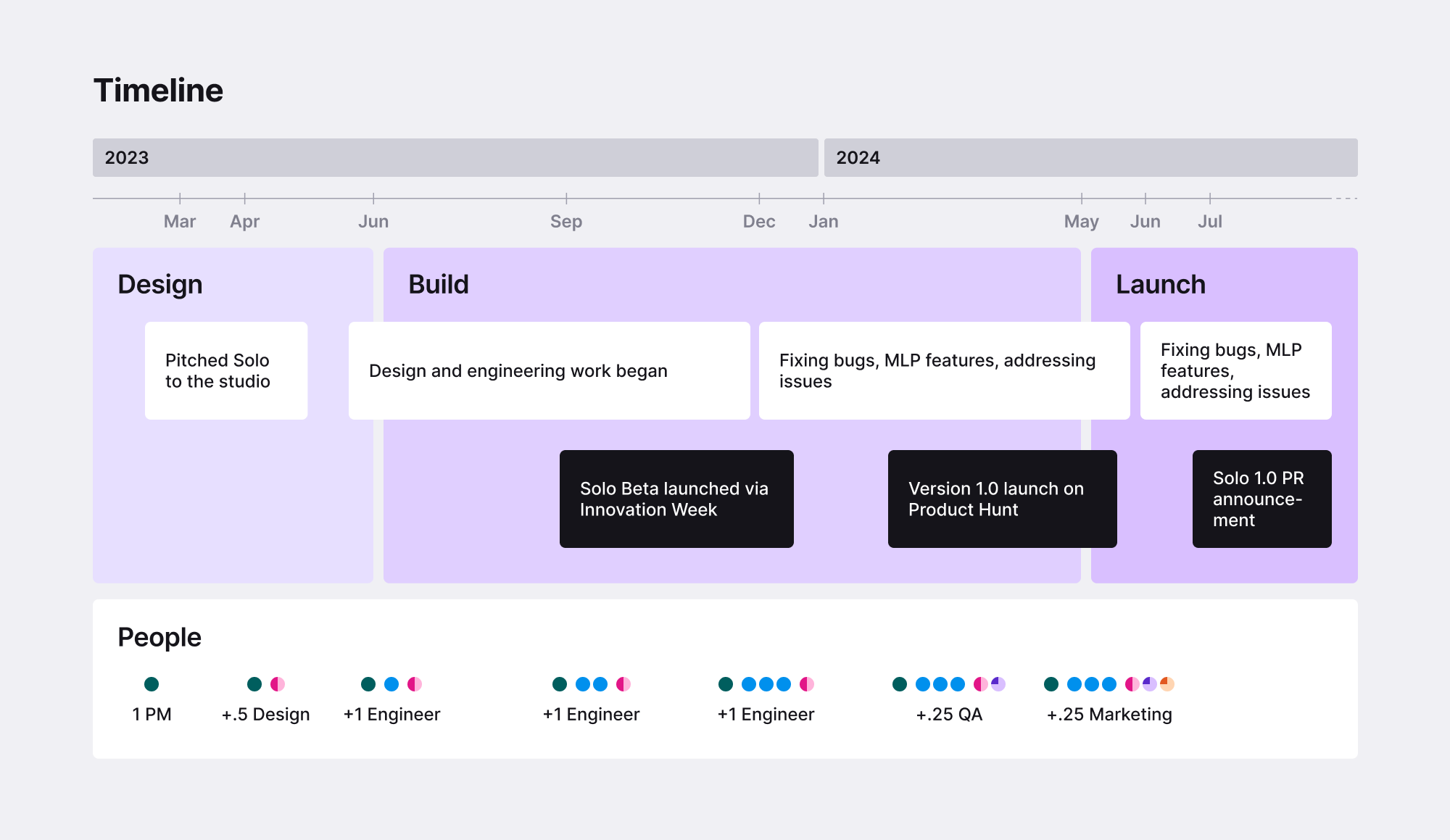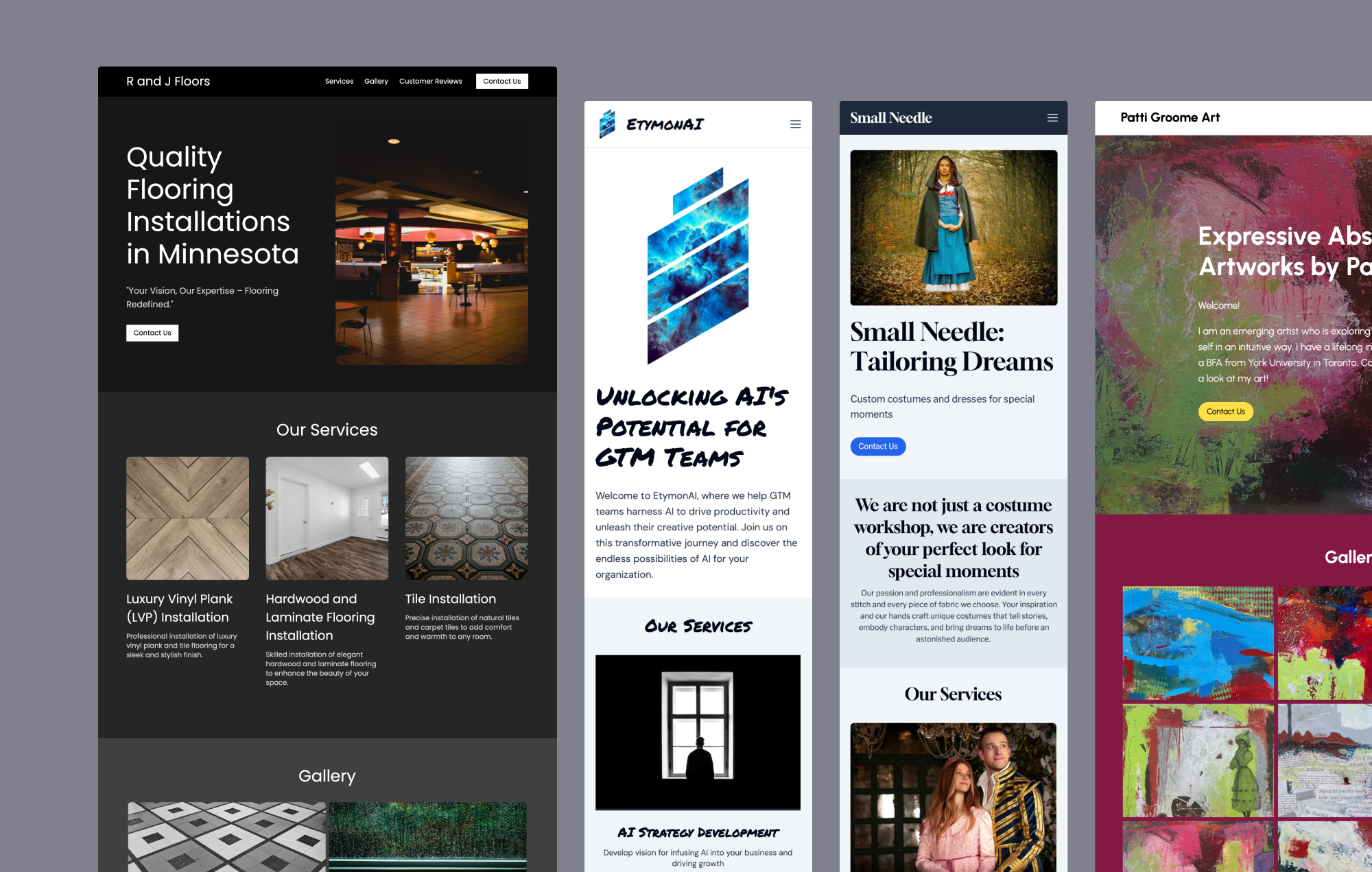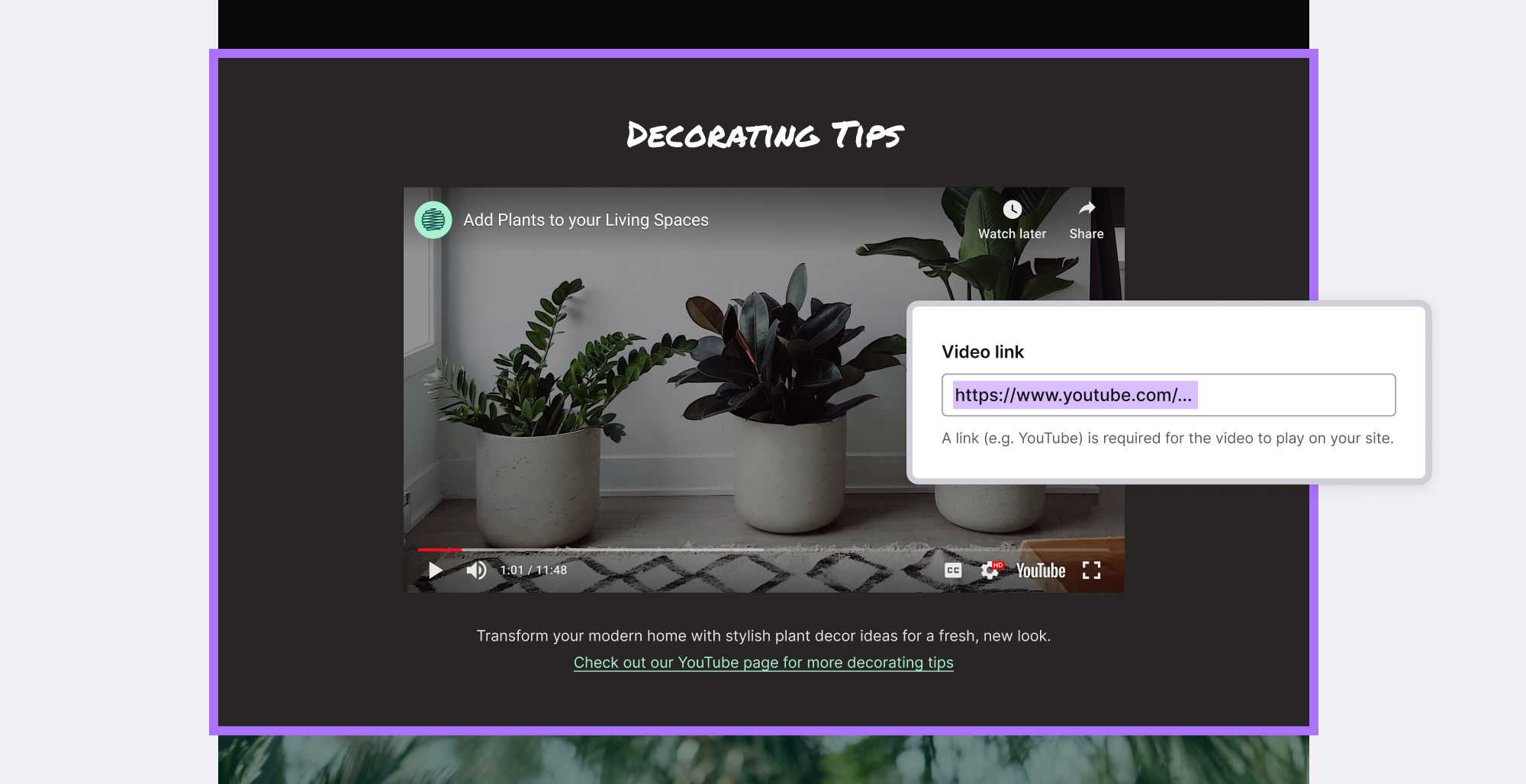Insights from launching Mozilla's AI Website Creator, Solo, and how it's shaking up the $2.1 billion industry
In the ever-evolving world of entrepreneurship, one business owner’s journey stands out as a testament to the power of easy, simpler technology.
And group chats.
When Richelle Samy embarked on her business journey to establish Culture of Stamina, she also embarked on a journey to find the perfect online presence that was elegant and professional. She found what she was looking for when a group chat led her to Solo, Mozilla’s AI website creator for solopreneurs. After a few clicks using Solo’s generative AI (GenAI) tools, Richelle had a website for her wellness brand with bold, sharp text and colors that conveyed the vibe she was looking for.
For Richelle, the power of Solo enables her to focus more on empowering and training her clients instead of spending hours on her website. Other website builders weren’t as easy.
“Those tools are really nice, but I feel like you need a little bit of knowledge of what you want to do and how you want to put things together,” she recalled. “Whereas with Solo, I knew I was looking for a window for my business for people to contact me, and I only wanted a couple of pages. It was very easy to use something that was already pre-made, versus something I had to do from scratch.”
When Mozilla launched Solo in December, we were curious to see how people like Richelle would receive GenAI with website creation. Six months into this journey, we’re happy with the progress, and it’s time to reflect on what we’ve accomplished and learned along the way. We talked with the Head of Solo at Mozilla, Raj Singh, about the AI website creator, its journey since the early stages, how it's disrupting itself in the market with free custom domains and much more.
//
To start, let’s talk about the first few months of Solo since its Beta launch in December. How big is the team, and how many websites have been published?
Solo started in May of last year with just myself and a part-time designer. We built a lightweight, clickable prototype and technical implementation to test whether generative AI could really work for website authoring. We also spent significant time surveying the broader landscape to make sure we had something that could differentiate and compete in an entrenched market.

After initial validation, we added one engineer and started the development process in June. By September, we had our first iteration that could create a website for a solopreneur with just a few simple inputs, and from there, we continued to refine the user experience. In October, we released an internal Beta, and then in December, we launched our Beta publicly.
Since then, our team within the Mozilla Innovation Projects group grew during this journey from just an engineer, a part-time designer and I, to three engineers, a part-time designer, myself and other part-time resources to support us.
We launched Solo 1.0 this past month, and in that period since Beta, we’ve seen over 7,000 diverse published websites across industries, from pool cleaners, to coaches, to immigration consultants.
When we started, our goal was to make it simple for non-technical solopreneurs to build their web presence and grow their business, and we believe we have accomplished the first step.

How has user feedback influenced the development of Solo?
At the beginning, you don’t have a lot of input, so you infer, make educated guesses, talk to others, test with clickable prototypes and so forth. During this process, it’s helpful to have some trusted users to lean on. You’re trying to optimize on creating a great initial experience but don’t have the data, resources or time to a/b test.
As we got to Beta, things changed. We received inbound, and we could triangulate feedback from each of our channels such as email, social, chat groups and more. These channels are some of the best you can get because it informs us of where there may be issues or gaps, but it also instructs us on how to improve user education in the experience. The best outcome is where product usage grows while support queries go down. This means the user experience is doing its job and customers understand how to use your product.
Going forward, our customer base is continuing to grow, and I like to say that you learn new and different things at different scales, so we’re looking forward to that. As we approached 1.0, we now have even more data. Not only do we have qualitative feedback from our existing channels, but we also have quantitative feedback that is statistically significant. We can now infer different issues and discover opportunities to optimize our users’ workflow.
What are some of the businesses you’ve seen built with Solo?
So, we recently did a cursory analysis of all the types of businesses people are building on Solo, and the results are vast. It’s across the spectrum. Not surprisingly, we are over-indexing on tech services, which is probably because of the early adopter audience with Mozilla, but we also see businesses in auto repair, virtual travel guides, roofing, photography, health and fitness coaching and more.
We know that side hustles are one of the fastest growing business segments in the world, so we’re excited to see the journeys of each of these solopreneurs. I will further add that SMB is a new focus area for Mozilla, and we have launched a Discord channel for this community to share tips and tricks, please check it out.

How do you compete with Solo in such a crowded market? How are you making Solo free?
When we initially conceptualized Solo, marrying GenAI with the service provider segment was an insertion point. Since then, and as expected, the incumbents have also built GenAI capabilities and improved their user experiences for the service provider audience.
In this situation, where we are the underdog, my approach is to look for maximum disruption, and we landed at the business model. Every competitor — that we are aware of, at least — charges for connecting and hosting your custom domain. This makes sense – 20 years ago, bandwidth wasn’t cheap and SSL (Secure Sockets Layer) certificates that enable an encrypted web connection cost money. Today, the former is near zero and the latter is zero.
We asked, “what if we just made this free?” This would be very disruptive, so this is exactly what we are doing. Not only is it disruptive, but democratizing the category is also in line with our mission to increase access to the web. We are making web hosting and connecting your custom domain free, similar to how Robinhood disrupted brokerages by eliminating trading fees. Many do not launch their website because they can’t afford or don’t yet have enough business to justify the cost. It also doesn’t help that many of these incumbents rely on hidden upsells and next thing you know, you’re spending $100 a month for your dog walking service. In this way, Mozilla continues to be a global public resource looking out for the interests of people.
Were there any technical challenges to building Solo?
There have been numerous technical challenges in working with GenAI to build Solo that we discuss in this blog post from our Beta launch. Since then, we’ve hit other challenges related to scaling custom domains and operations, but we’ve overcome most of these.
One thing we’re now encountering which really points at how you learn different things at different scales are abuse scenarios, such as bots. On one hand, this is a milestone because we achieved a certain inflection of growth, but on the other hand, we need to continue to build practices to inform potential policies.
Are there any new features with Solo 1.0?
Yes, and we’re excited about them. Solo AI Website Creator 1.0 will have a few new features, including support for videos, adding a favicon, new languages, new layout options, plus more. Our release notes go over this in detail.
How is it building Solo, a new product at Mozilla?
Building a new product at Mozilla, also known as zero to one, and probably any large organization, has challenges. I come from a startup background, so this is my comfort zone and I have some principles I generally abide by.
First, it’s important to be the top advocate for the product. This can be hard because things will pull you in different directions, whether other initiatives, shiny objects or your own self-doubt. Second, adopt the tools you need and optimize on speed — it’s easy to get stuck in administrative stuff. Third, resourcing can be slow, so optimize on generalists and make sure everyone is comfortable with grunt work. Fourth, make product decisions — many of them one-way — quickly. There’s just not enough time to get consensus or have everything be data-driven at the onset. The last thing is to take agency when you can. The five minutes here, the half day there, the follow-up meeting tomorrow cause delays and they compound.

Has anything surprised you through building and operating Solo?
There have been a few surprises as we better understand the data.
First, we are targeting service providers, but we’ve seen all sorts of sites being built from restaurants, to personal homepages and more. We’re not specifically targeting those segments, but it’s good to be aware. Second, our customers use every editing tool we provide. This has been and continues to be a delicate balance because our focus is keeping the experience simple while sufficient.
The last thing is that Solo has a real global footprint, a testament to Mozilla. We see sites created across 95% of the world! Many initially GenAI-drafted in English are being rewritten into their local language.

How did you know to lean into GenAI, and how did you arrive at this problem?
I’ve been building AI-first and/or AI-supported products for quite some time, so that is an area of passion. Mozilla and the Innovation Studio Projects team has also been experimenting with GenAI since the onset, as we know this is a transformative technology for our customers.
Independently, during the pandemic, I was looking for ways to keep my six-year-old son engaged, so I started teaching him chess and thought I could set up a website to teach other kids chess over Zoom for free. I created a WordPress account, spent about an hour and I never finished. It was just too difficult from design, writing content and more.
Now, fast-forward to today, the goal of our Innovation at Mozilla projects is to build new products that could become new businesses that are a fit for Mozilla. Starting with a blank slate, I leaned into areas intersecting AI and personal passions. Solo was the result of this ideation, and then with the rapid growth of the service provider economy, made this the obvious choice to pursue.
Can you share details about how Solo fits into Mozilla’s overall mission?
In many ways, Mozilla has been at the intersection of the internet and the interests of the people, as opposed to Big Tech. With Solo, we are squarely within this vision. We are democratizing access to the web for solopreneurs, and we’re increasing equity by helping those that can’t afford to host their websites in emerging markets, or where English isn’t their first language, with writing, designing and curating their content.
Where does Solo go from here?
Our first goal was to make it easy for a solopreneur to build their web presence, but our ultimate goal is to help them grow their business. To help them do this, we will build more tools to market and explore opportunities to promote their business within Mozilla’s other assets.